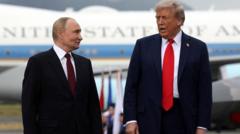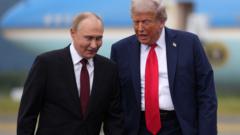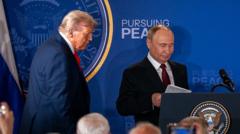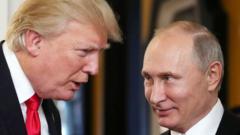Apple faces significant challenges as US tariffs on Chinese imports rise, putting its production strategy in jeopardy. While the company has enjoyed success in China, competition is increasing, and potential relocations of assembly operations could impact its supply chain and profits.
Apple’s Dilemma: Navigating Tariff Turmoil Between the US and China

Apple’s Dilemma: Navigating Tariff Turmoil Between the US and China
Apple's reliance on China for manufacturing is being tested as rising tariffs threaten its production and market strategies.
Apple's predicament is escalating as trade tensions between the US and China intensify, directly impacting its production strategy. The tech giant, designed in California but primarily manufactured in China, finds itself at a crossroads, grappling with the possibility of increased tariffs under President Trump’s administration. Apple churns out more than 220 million iPhones annually, with approximately 90% of them manufactured in China - a country crucial to its global supply chain.
Despite recent exemptions for smartphones from tariffs, the ongoing threat remains palpable. Trump signaled a strong intention to impose taxes on electronics, leaving Apple anxious about the future of its production facilities. The intricate web of Apple's supply chain is now considered a double-edged sword, underscoring how deeply interwoven the company is with China's manufacturing capabilities.
Apple's ties with China date back to the late 1990s when it found a lifeline amidst financial struggles. Over the years, the company expanded its operations in the country, establishing partnerships with firms like Foxconn and fostering local talent. This collaboration has transformed China's manufacturing landscape, making it an epicenter for tech production.
However, with rising tariffs being levied against its products, questions arise about Apple's future in China. Experts believe that moving assembly operations back to the US is an unrealistic and costly venture. Efforts to diversify manufacturing have been limited, with Vietnam and India taking small steps toward supporting production.
As Apple tries to navigate these challenges, the implications could reverberate throughout the tech industry, especially in light of increasing competition from Chinese tech firms. The complexities of the US-China relationship further complicate matters, with tariffs impacting the overall cost of production and pricing strategies.
The looming threat of tariffs and a sluggish economy may also affect Apple's market position in China, where it previously reigned as the top smartphone brand. With consumer spending on the decline and local competitors emerging stronger, Apple's dominance could be jeopardized.
While Apple has made a substantial commitment to invest in the US, it remains to be seen whether this will appease political forces or alter its dependence on China. As the pressure mounts, Apple’s supply chain vulnerabilities will demand strategic responses to secure its future in the competitive tech landscape.
With the specter of tariffs lingering, Apple’s situation remains fraught with uncertainty, leaving the company scrambling to find a viable path forward in a rapidly shifting global market.





















